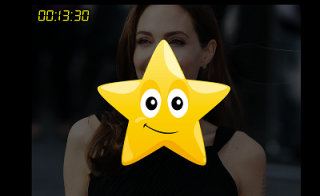
Eye Gaze Eval -- Start with Fun and Keep it Simple
When AT professionals get excited about a new technology like eye gaze, it’s so tempting for us to just dive right into it and take our client straight to the end goal, whether that be face-to-face communication, Skype, writing etc. But that enthusiasm may not always be to the client’s benefit.
With eye gaze (but we’ve seen this happen with every technology under the sun: Intellikeys, Touchscreens and iPads, to name a few) it’s easy to think that we can just change the access if we've already had some success with the activity. Eye gaze is so “intuitive” after all – just go ahead and open a communication board or a writing keyboard, look at it and voila.... instant success! But can you remember what it was like when you used a computer mouse or a touch screen for the first time? There was a time when you didn’t know what “click and drag” or a “swipe” was -- nothing is ever as intuitive as we remember it.
In our experience even a literate adult user, that just has physical issues such as like ALS or CP without cognitive challenges, s/he can easily find going straight to the end goal -- communication board, computer control, writing etc. -- overwhelming. Eye-gaze -- as intuitive as it is -- is still a skill and a skill takes some sort of learning curve.
Start with Simple

So try something simple, fun and engaging like a readymade activity in Look to Learn or ones created in the Grid. Even if you just spend a couple of minutes on something like the Look to Learn Pie Splat or an error-less puzzle (see below for an example in the Grid), it gives the evaluation team a chance to troubleshoot the system or positioning without the added challenge of whatever else you want the computer to do. It also gives a chance for the user to just get used to how eye-gaze works and have some fun.

Christmas jigsaw puzzle in the Grid - a free download from Online Grids
For our Rett syndrome girls or other clients with cognitive challenges connecting with communication is already a significant learning goal – so the rationale to start with something that focuses on access and not access and communication should be obvious. Nonetheless, many times I’ve seen how an evaluation team wants to go straight into a communication board, or writing grid because the user has had some success with that activity but with another access method.
Just swap out one skilled access method for another more "intuitive" one -- instant success, right? Sometimes, yes, but more often than not things take a little more time.
Clara
Once I was in a classroom with a girl with Rett syndrome, we’ll call her Clara, and the communication team had prepped a simple board in Tobii communicator with food choices. Food was a big motivator for Clara. When Clara didn’t pick yogurt – Clara’s absolute favourite snack -- the team thought it was because the eye gaze wasn’t working for her. But after 15 minutes an EA popped into the room and said Clara had just had a snack before the team came for the evaluation. So was the problem with the access method, the communication software, or just that Clara wasn’t hungry? (we then tried the first level of activities in Look to Learn, had success, and built on that).
Fun is Good

Even with mature, literate clients don’t drive to the end-goal, start with something simple but make it fun. I was recently chatting with Neal Hansen from Sensory in the UK and he said that when he’s assisting on eye-gaze evaluations with adult clients – ALS, quadriplegic etc. – he’ll use the simple targeting activity in Look to Learn, but change the picture so that Angelina Jolie or Daniel Craig, are revealed. For the pie splat activity, he’ll have some well known politicians or celebrities (Simon Cowell is a particularly popular target), or loathed sports stars from a rival team – anyone that people love to hate.

From a literate adult, to a child with numerous sensory and cognitive challenges, eye-gaze is new and takes a while to get used to. Engaging a client with the access method before leaping into communication or any other task, is key to determining if eye-gaze is appropriate. For some clients even doing well with a Pie Splat game may be a huge breakthrough and alone may make eye-gaze worth the investment. For other clients a simple targeting activity should just be the start. But in both cases starting with something simple and fun is an essential foundation for a successful evaluation.
--Bogdan Pospielovsky
- Choosing a selection results in a full page refresh.
